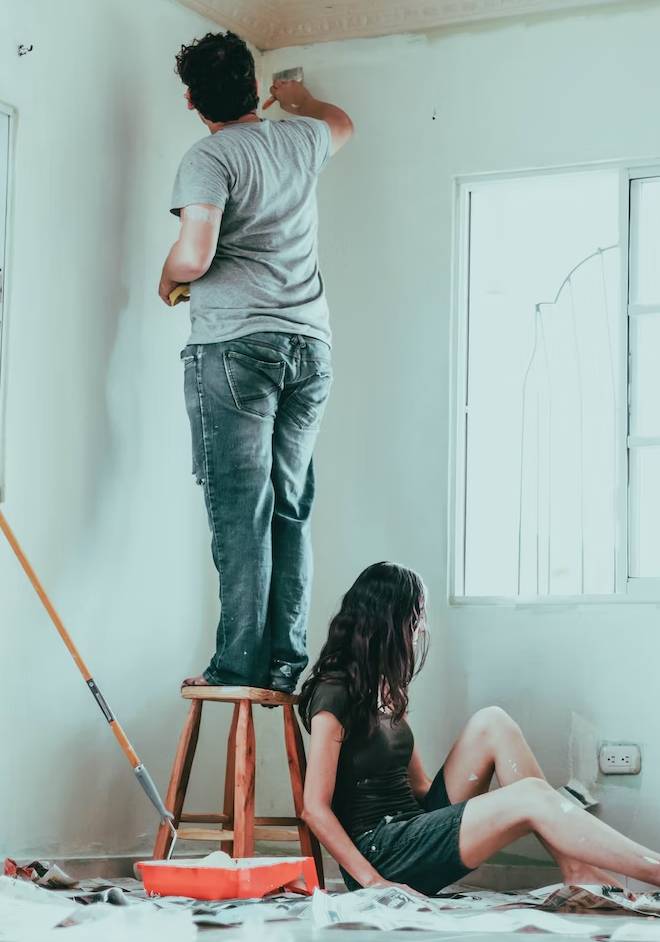
Why wouldn't you consider virtual staging a marketing tool for your house in this digital age, when you may see places online and buy a home sight unseen? Is virtual staging still relevant in today's competitive housing market? Is it worth it to do virtual staging for your house? What is the difference between standard and virtual staging, and which should you choose? We'll explain the cost of virtual staging and break down everything you need to know so that you can decide if it's the right path for you.
Virtual staging creates a natural and digitally generated image of how to decorate a home using tools like computers rather than traditional methods like filling the existing house with furniture. There is no furniture, potted plants, area rugs, or other décor. To demonstrate the potential of an empty room in high-resolution photographs, experienced virtual stagers digitally insert decorative elements.
The significant distinction between conventional and virtual staging is that traditional staging shows home as it is, whereas virtual staging showcases home as it might be.
In virtual staging, a photo is enough to make the space appear almost prepared. And that's not all — you can also use virtual staging to enhance a home's curb appeal by changing landscaping, swapping out old doors and windows for new ones, or even painting the exterior of a home.
While virtual staging isn't for every home, it can still provide numerous benefits if used correctly. Specifically, the following types of homes are good candidates for virtual staging:
Vacant homes: In many cases, it's cheaper to use virtual staging than to stage an empty home physically.
Homes with outdated furniture: Virtual staging can make an older home stand out instead of renting new furniture.
Properties with tenants: it can be useful when a house owner has little control over the appearance of the space.
If you still live in your house and can arrange your belongings to appeal to potential purchasers, whole-house virtual staging isn't for you. You can still virtually stage certain areas if you and your agent believe it's the best approach.
Here's a quick price comparison between traditional home staging and virtual staging:
The cost of virtual staging ranges from $39 to $199 per room, depending on the contractor you choose, your location, and the amount of area that needs staging.
Traditional staging costs between $500 and $600 per room, based on the stager you hire, the amount of furniture you have to rent, your location, and the number of spaces that require staging.

The showcase features: You can showcase all of the features of a home without having to worry about staging it.
Cost-effective: Virtual staging is much cheaper than traditional staging, and you don't have to worry about renting or buying furniture.
Flexibility: You can virtually stage a home to fit any style and change the class as often as you'd like.
Less time-consuming: You can stage a home in minutes and don't have to wait for the furniture to be delivered or set up.
Can become more expensive: If you need to virtually stage multiple rooms or make significant changes to a home, the cost can add up.
It's not reality: Some buyers may be turned off because the house is not staged.
Real-life perspective: Furniture is arranged realistically, so buyers can better understand how the home functions.
Fully-furnished: A completely furnished home looks more inviting than an empty one.
Highlight your space: Staging can make tiny homes look more significant and empty rooms look more functional.
Cons of traditional staging
It's expensive: You have to rent or buy furniture, and you may need to hire a professional stager.
It can be inconvenient: You have to move all your stuff out of the house, which can be a hassle.
A seller's most common blunder is hiring a virtual staging business that doesn't deliver positive results. Buyers should not be able to tell that photos are virtually staged unless someone informs them. When picking out virtual staging, avoid making the following mistakes:
Misleading buyers
Adding too much décor
Only use virtual staging when it's necessary.
Staging may be beneficial when selling a vacant or inhabited property with out-of-date decor. The stage transforms a home from a space into a beautiful showcase for its features and amenities, allowing potential purchasers to see it in the finest light possible. Whether you choose virtual or actual staging, either method may help you sell your property faster and for more money.


Jan 24,2025

Nov 27,2022

Nov 20,2022
